Sericulture - Definition, Process, FAQs
Define Sericulture:
Sericulture is the practise of raising silkworms for the purpose of producing silk. It is a type of agriculture. It requires raising silkworms for the purpose of producing raw silk, which is a material made from cocoons spun by specific insect species. Sericulture means in operations include cultivating silkworms that spin silk cocoons and reeling the cocoons to unwind the silk filament for value added benefits such as processing and weaving.
NEET 2025: Mock Test Series | Syllabus | High Scoring Topics | PYQs
JEE Main: Study Materials | High Scoring Topics | Preparation Guide
JEE Main: Syllabus | Sample Papers | Mock Tests | PYQs
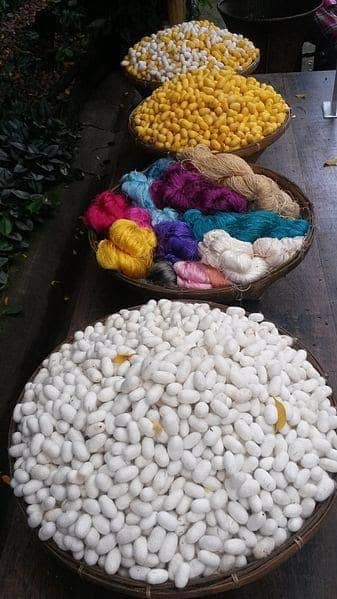
Sericulture images: silk cocoons and silk
Domestic silk moth caterpillars (also known as ‘Bombyx mori') are the widely used silkworm species in sericulture in India. For the manufacture of ‘wild silks,' other varieties of silkworms (such as Eri, Muga, and Tasar) are also reared.
Sericulture in India:
The lives and culture of the Indians have been linked with silk. Sericulture meaning is a very old profession in India. After China, India is the world's second largest producer of silk, with Karnataka being the country's top producer. Due to its high employment centric, low capital intensive, and remunerative character, it represents a livelihood option for millions of people. A significant number of these employees, including females, come from the economically backward sections of society. India's historic and culture-bound home market, as well as a huge range of silk garments that reflect geographic uniqueness, have aided the country's rise to the top of the silk industry.
Also read -
- NCERT Solutions for Class 11 Chemistry
- NCERT Solutions for Class 12 Chemistry
- NCERT Solutions for All Subjects
Define Silk:
Silk is a protein fibre made up of two proteins: sericin and fibroin. Fibroin, which is concentrated at the centre of silk fibre, makes up around 80% of it. A coating of sericin surrounds this core (which makes up the remaining 20 percent of silk). Colour is imparted to silk via pigments (such as xanthophyll) in the sericin layer of the fibre.
Type of silk | Quality | Types of silkworm | Colour |
Mulberry | Top quality, shining fibre. | Bombyx mori | Yellow, Green |
Eri | Moderate quality with less shining | Attacus rinci | Creamy-white Brick-red |
Muga | Slightly tough fibre, moderate quality | Anthraea assama | Light yellowish |
Tasar | Lowest quality | Anthraea mytilla; A. paphia; A. royeli | Copper brown |
Source: MS word (self-made)
Silk Production Process Steps:
Silkworm rearing and cocoon harvesting: A female silkworm lays its eggs on a mulberry tree leaf. It takes around 10 days for eggs to hatch once they are deposited. When the eggs hatch, the larvae resemble worms. The silkworm's life cycle lasts around 24-33 days during this stage. The silkworm's appearance will alter between the ages of 20 and 33 days, turning yellowish and transparent. This means they're getting ready to make a silk net around themselves, which is a liquid protein released by the silk moth or caterpillar's head.
The worm uses this silk as an anchor, swinging back and forth to pull a long continuous thread and create the cocoon. The fibre may be up to 1 kilometre long. Silkworms may construct a cocoon in as little as 48 hours. Silkworms are placed in a circular bamboo tray at this stage to produce evenly formed cocoons that are easier to harvest.
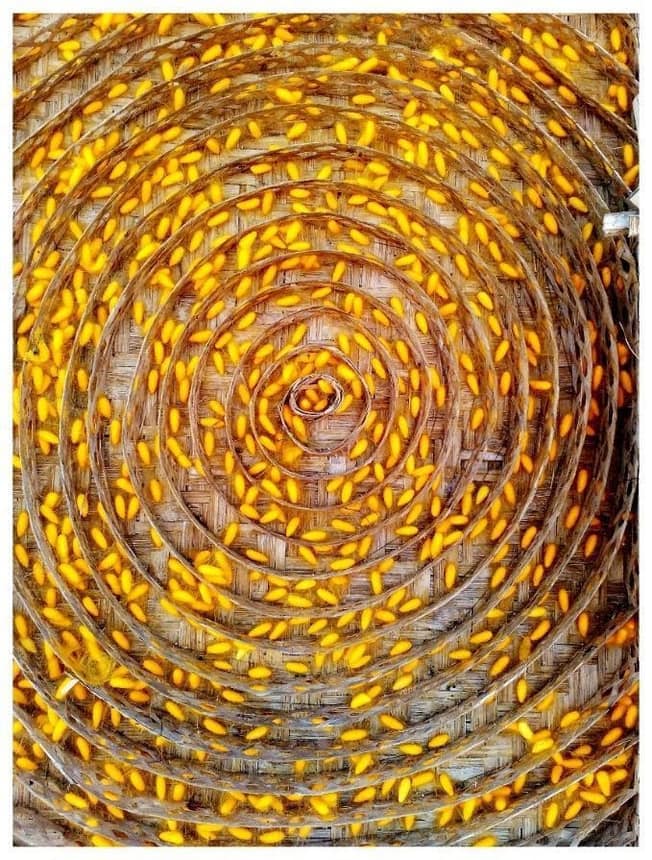
Circular bamboo with cocoons
- Extraction of Silk: These new cocoons are now ready to be placed in the reeling pot. Each cocoon is made up of hundreds of yards of silk thread. It's critical to keep the silk thread's length. To destroy the chrysalis and make the fragile thread unravel easier, the cocoons are put in boiling water.
- Dyeing process: Before dying, the silk thread is cleaned and sericin (a kind of gum) is removed. Silk thread bundles are immersed in dye pots with a heated combination of indigo leaves for many days to achieve the desired colour and quality in the traditional process of dyeing Silk thread. Silk strands are dyed using contemporary commercial processes nowadays.
- Spinning process: Silk thread is spun after it has been dyed. Spinning wheels have been used for this purpose since an earlier period. Although numerous innovative ways for spinning silk threads have been invented, still the coloured silk strands are unwound using spinning wheels
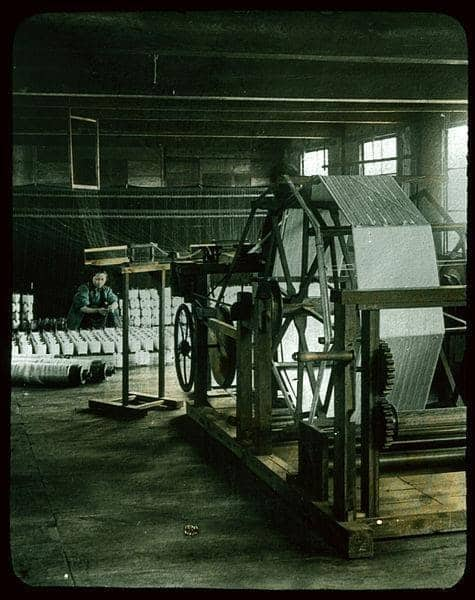
- Weaving: Following the spinning of silk thread, the weaving of silk thread takes place. Weaving is the process of making a fabric out of a wrap by interlacing threads at correct angles. This is accomplished with the help of a loom. There are several types of machinery available now for weaving silk strands.
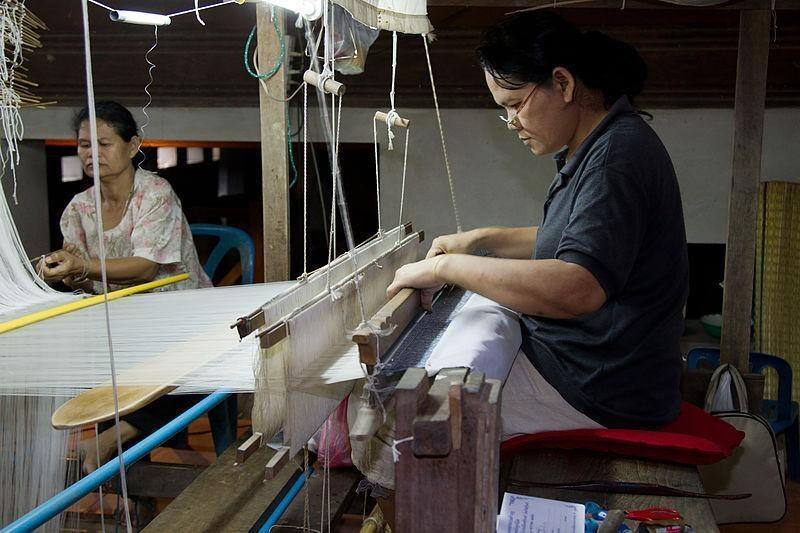
- Binding (ikat): Silk cloth is dyed in a variety of designs and used to manufacture sarees, shawls, and other items. Wrap ikat, weft ikat, double ikat, and pasapalli ikat are all examples of ikat.
Moriculture:
Moriculture is the cultivation of mulberry plants for the purpose of feeding silkworms. These plants are important in the sericulture process. The most widely utilised method for mulberry cultivation is stem grafting. Cuttings from the stem of a mature mulberry plant are removed, measuring around 22 centimetres in length, and having at least three buds. These cuttings can be planted right once or maintained in nurseries for a while before being transplanted.
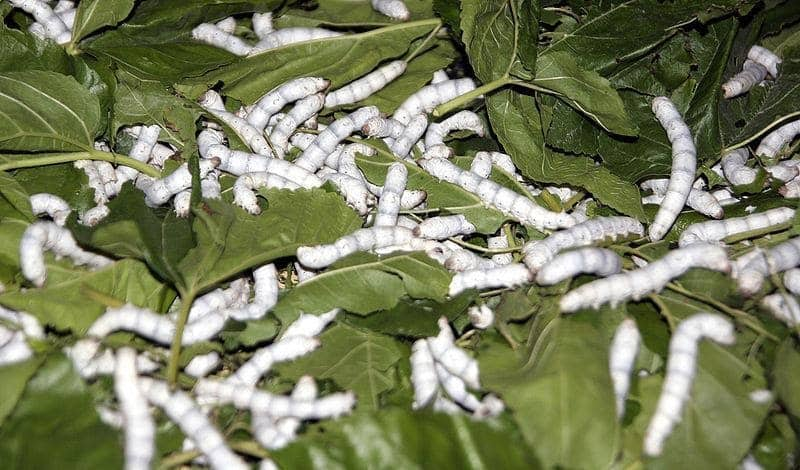
The following methods can be used to harvest mulberry leaves from the plants:
- Leaf plucking is the manual removal of individual leaves.
- Branch cutting is the complete removal of a branch.
- Mulberry shoot tops are removed during top shoot harvesting.
It's worth noting that one kilogram of mulberry leaves may feed about 50 silkworms
Related Topics Link, |
Life Cycle of Silkworm:
- Egg: The egg is the initial stage in the silkworm's life cycle (stage 1 in the fig.). A female moth lays the egg, which is typically the size of a tiny dot. At any given moment, a female moth may deposit more than 350 eggs. The eggs hatch in the spring because the air is warmer. This treatment takes place once a year.
- Silkworm: After the eggs hatch, a hairy silkworm emerges (stage 2-6 in the fig.). The growth of silkworms occurs at this stage. They feed on mulberry leaves and eat a lot of them for around 30 days before moving on to the next stage.
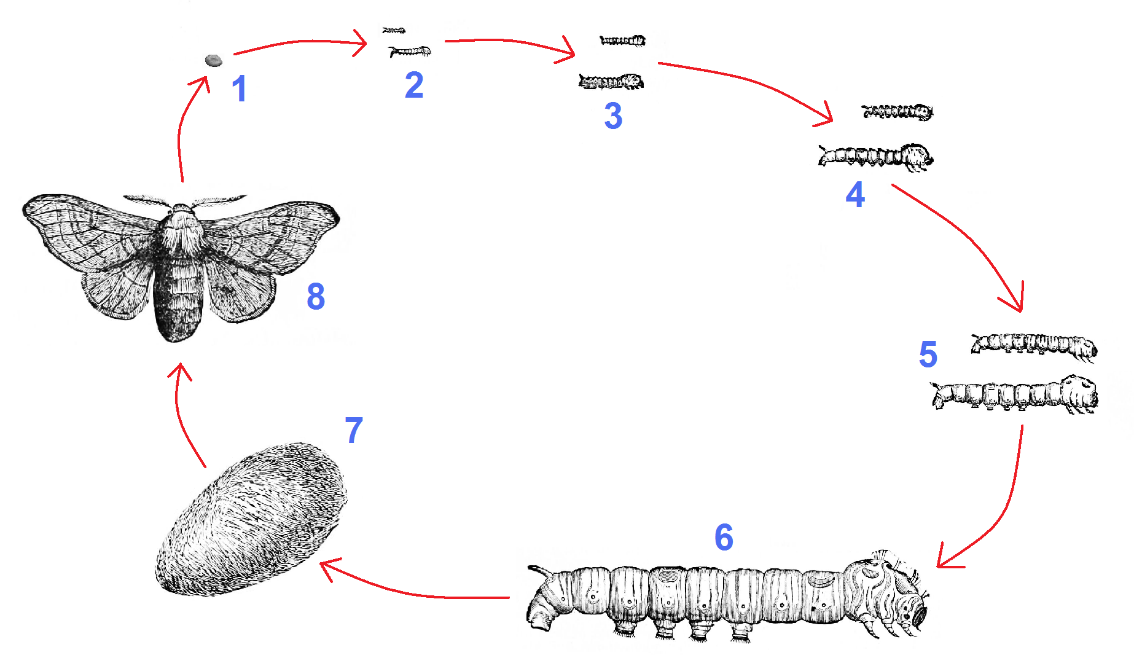
3. Cocoon: Silkworms form a protective cocoon around themselves at this stage. It's about the size of a tiny cotton ball and is fashioned with a single silk thread.
4. Pupa: The pupa stage is characterised by its lack of movement. People destroy the pupa at this stage by immersing the cocoon in boiling water and unwinding the silk thread.
- Moth: The pupa transforms into an adult moth at this stage. After mating, the female moth lays eggs, and the silkworm's life cycle begins all over again.
Challenges in Sericulture:
Silk farmers who practice sericulture face a variety of issues that might adversely affect their crop. They are also vulnerable to a variety of health risks. Pebrine and flacherie are two illnesses that silkworms are prone to. Several pests can be harmful to silkworm larvae's growth and development. The following are some of the most significant problems addressed by sericulture
- The pebrine illness can infect the eggs and cause them to die before the larvae emerge. This illness causes black patches on the larvae and causes them to become sluggish.
- Infections with viruses can cause the larvae's bodies to shrink. They may also begin to emit an unpleasant odour.
- Other viral diseases, such as cytoplasmic polyhedrosis, might make the larvae eat less.
- The muscardine infection, which is caused by fungus, can make the larvae exceedingly weak and finally kill them.
- Dermestid beetle larvae can dig into silkworm cocoons and consume the pupae. These damaged cocoons can't be reeled in for silk.
- Silkworms are killed by a poisonous chemical produced by certain mites.
NCERT Chemistry Notes:
Importance of Sericulture:
- It has a high employment potential. It is astounding to learn that the sericulture sector employs 60 lakh people in our country on a yearly basis.
- Sericulture is a significant agro-based enterprise that adds value to villages
- Women-Friendly Occupation: Sericulture tasks such as mulberry garden maintenance, leaf harvesting, and silkworm rearing are better carried out by women.
- Mulberry (plant used for sericulture) is an environmentally beneficial crop that offers green cover and aids to soil conservation as a perennial crop with strong leaf and root-spread.
- Silkworm waste may be recycled and used as fertiliser in the mulberry garden.
Also check-
Frequently Asked Questions (FAQs)
Silk is a natural fibre produced by the cocoon of silkworms. Silk fibres are extremely robust and are frequently used in the manufacture of clothing.
Sericulture is the practise of breeding silkworms (i.e., the creation of cocoons) for the purpose of commercial silk production.
Sericulture is the name given to the process of making silk. The rearing of silkworms on mulberry leaves is the first step in the extraction of raw silk. Individual long threads are removed and put into the spinning reel after the worms begin to pupate in their cocoons, which are dissolved in boiling water.
Moriculture, Silkworm rearing Silk reeling
Mulberry leaves.
Also Read
02 Jul'25 05:06 PM
02 Jul'25 05:06 PM
02 Jul'25 04:54 PM

